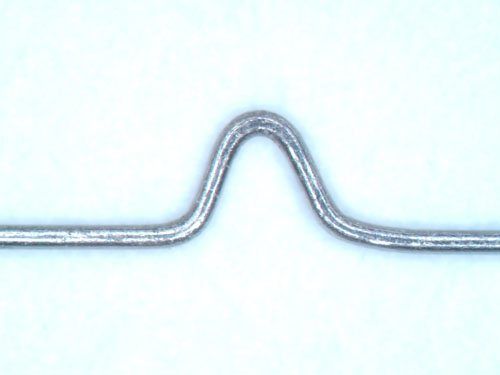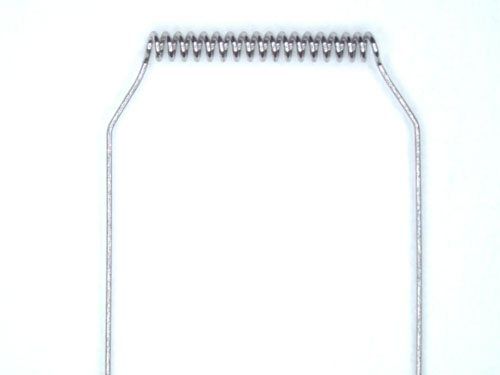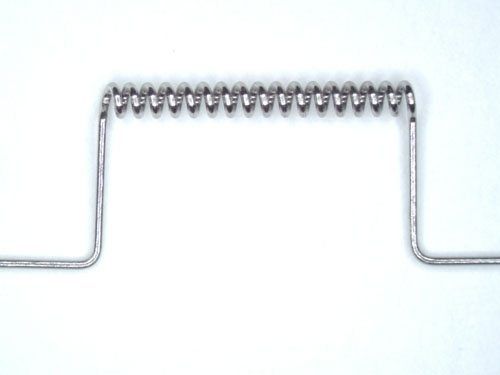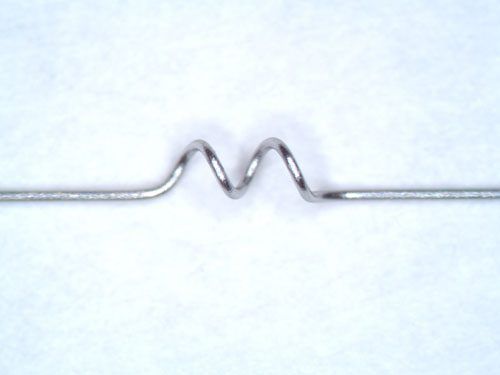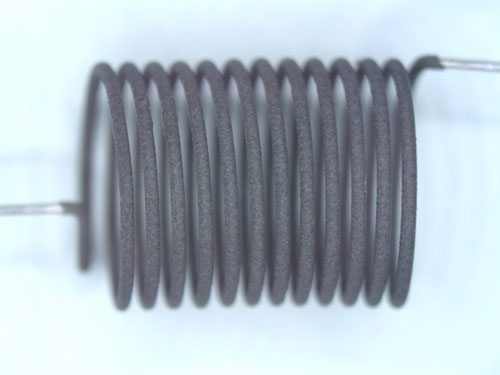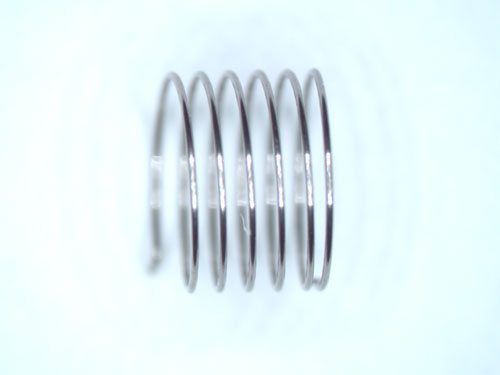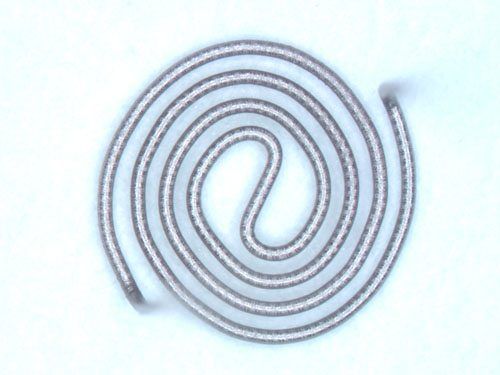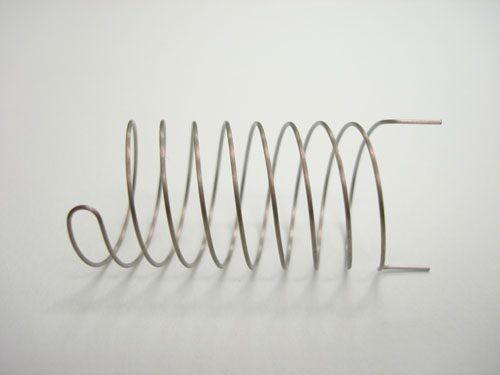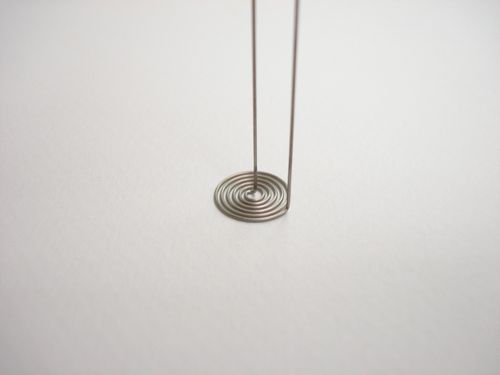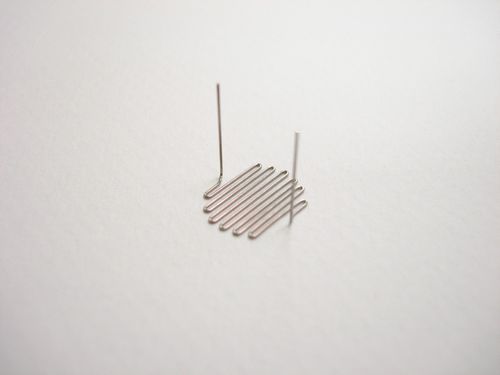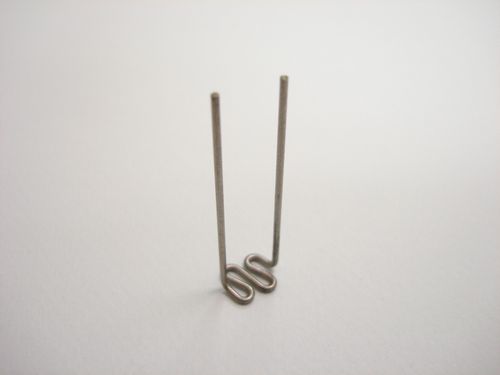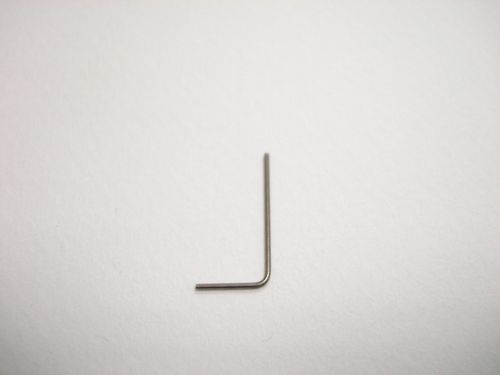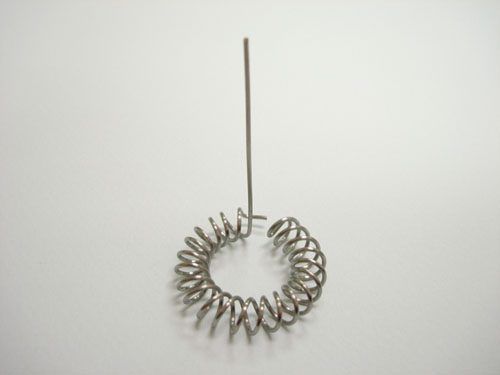About High-Temperature Molybdenum Wire
The high-temperature molybdenum we use here at Union City Filament is an alloy composed of, in parts per million by weight at the powder blending stage, about 40 to 180 ppm of aluminum, about 600 to 2500 ppm of silicon, about 50 to 150 ppm of potassium, and the remainder being molybdenum. The aluminum and silicon out-gas during initial processing of the blended powders and/or sintering of the ingot, leaving only potassium and molybdenum behind. The ingot is then swaged and drawn to its final wire size.
Properties of High-Temperature Molybdenum Alloys
This molybdenum-based alloy is preferred over pure molybdenum in Union City Filament’s products because it has a higher recrystallization temperature. Therefore, it is stronger and more ductile after exposure to high temperatures. In addition, upon being heated above its recrystallization temperature and worked, this alloy forms an interlocking grain structure, contributing to its non-sag and shape stability properties.
Even though alloying increases molybdenum’s strength and ductility after primary recrystallization, the main way this material is intensified is by mechanical deformation. Deformation through rolling, swaging and drawing can increase molybdenum’s strength by a factor as much as four. For heavily worked materials (like wire), it can be even higher.
Uses of High-Temperature Molybdenum Wire
Here at Union City Filament, we use HT Molybdenum for many of the same applications as 3% Rhenium-Tungsten wire. We use this molybdenum alloy over Rhenium-Tungsten in projects where increased formability is necessary for filament and heater making purposes. Compared to tungsten and tungsten alloys, molybdenum also has superior weldability. Some uses include, but are not limited to, larger microwave tube cathode heaters, getter heaters, high-temperature springs and various types of electrodes.
High-Temperature Molybdenum is also a popular choice for overwind material on many of our tungsten and 3% Rhenium-Tungsten products. An overwind is a tightly wound coil wrapped over the legs (leads) of filaments and heaters. Overwind, also known as cooler coil and overwrap, provides for several features that are desirable for filament and heater leads: ease of weldability to electrical connections, lower regional resistivity and temperature, and increased strength.
Regardless of what your end application is, Union City Filament’s expert engineers will work with you to design the best filament or heater to suit your needs.
Questions? Contact us today for help.
